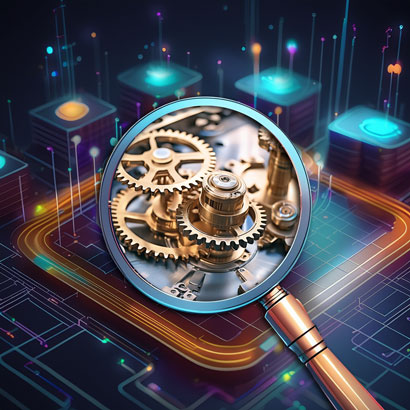Understanding AI: Process to Implement AI Models
Implementing AI models requires a systematic approach to ensure success. Here are the key steps in the process, from defining objectives to creating a production pipeline.
Business Considerations

Define Your Objective
Before diving into any AI project, it’s crucial to clearly define what you’re trying to solve. Ask yourself:
- What’s your objective?
- What problem(s) are you trying to address?
- What manually intensive processes would benefit from AI driven automation?
- What tools are available to drive action from the AI results?
This step sets the foundation for your entire AI implementation process.
Business Justification / Return on Investment (ROI)
After identifying the problem you’re trying to solve, it’s essential that you identify the benefits of taking on an AI project. Some potential benefits are:
- Improved efficiency and productivity
- Cost reduction
- Enhanced decision-making
- Personalized customer experiences
- New product/service development
- Competitive advantage
- Risk management and fraud detection
- Predictive maintenance
- Supply chain optimization
- Revenue growth
ROI for AI projects can vary widely depending on the specific application, industry, and implementation. It’s crucial to carefully assess potential ROI for each specific AI project.
Data Sources and Volume
Identify the source(s) of data. Depending on the problem you’re trying to solve, consider:
- Internal databases
- Web-based applications
- Public datasets
- Sensor data
How much data is needed? This varies depending on the complexity of your problem and the chosen model. Generally, more data leads to better results, but quality is just as important as quantity.
Data Science / Engineering Activities

Exploratory Data Analysis (EDA)
EDA is an approach to analyzing data sets to summarize their main characteristics, often with visual methods. It’s typically the first step in data analysis, performed before formal modeling or hypothesis testing. EDA will help to uncover patterns, relationships, and potential issues in your dataset.
Data Cleansing
Data cleansing, also known as data cleaning or data scrubbing, is the process of detecting and correcting (or removing) corrupt, inaccurate, or irrelevant data from a dataset. It’s a crucial step in data preprocessing that ensures the quality and reliability of data for analysis.
Data Tokenization
Data tokenization is the process of breaking down text or other data into smaller units called tokens. This step converts raw information into a format AI models can analyze, enabling them to understand language patterns and perform tasks like translation or text generation.
Feature Engineering
Feature engineering is the process of selecting, creating, or transforming raw data into meaningful inputs (features) that machine learning models can use effectively. It involves identifying which aspects of the data are most relevant to the problem at hand and representing them in ways that enhance the model’s performance.
Data Splitting
Data splitting is the process of dividing a dataset into separate subsets for training, validating, and testing machine learning models. Typically, this involves creating a training set to teach the model, a validation set to tune its parameters, and a test set to evaluate its final performance.
Model Selection and Application
Apply various models that might work for your data. Your domain knowledge and experience will guide which models to test. For each model:
- Measure its success using appropriate metrics
- Focus on minimizing false positives and negatives
- Consider implementing bounds, limits, or guardrails depending on what you’re trying to predict
Model Refinement
Fine-tune your chosen model by:
- Oversampling minority classes if dealing with imbalanced data
- Adjusting model parameters to optimize performance
Create an AI Production Pipeline
An AI production pipeline is the end-to-end process of taking an AI model from development to real-world use. Think of it as an assembly line for AI: raw data goes in one end, and a functioning AI system comes out the other, ready to make predictions or decisions in real-time. This pipeline ensures that AI models can consistently and reliably process new data, adapt to changes, and deliver results in a production environment.
By following this process, you’ll be well-equipped to implement AI models effectively in your organization. Remember that implementing AI is often an iterative process, requiring continuous refinement and adaptation as you learn more about your data and the problem you’re solving. Contact us for more information.


